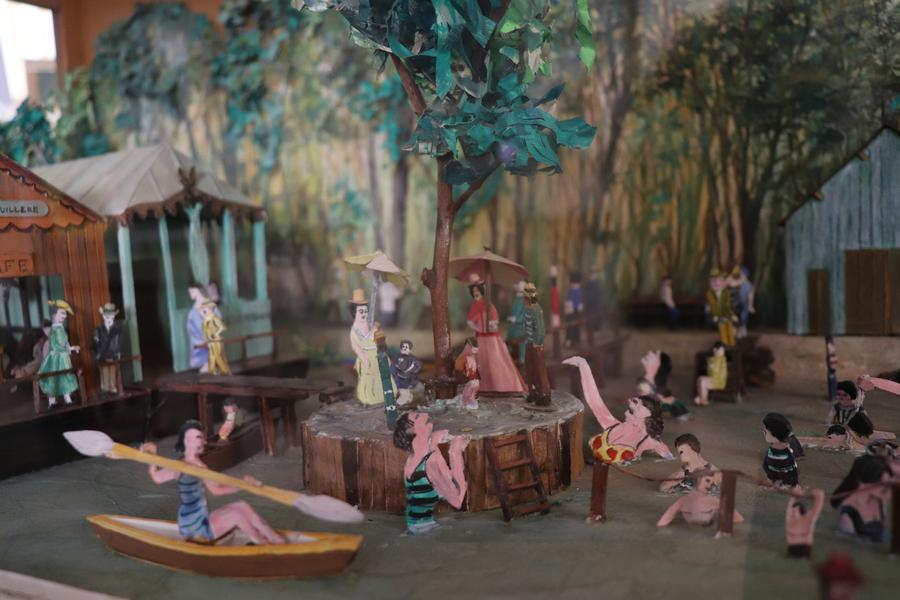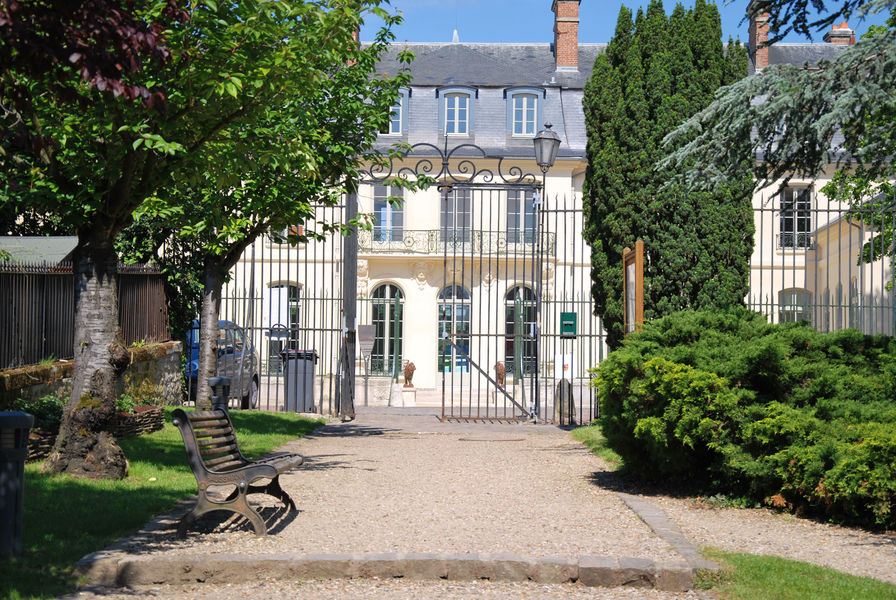You’re going to love discovering Croissy-sur-Seine; a paradise for family outings! The commune is bursting with leisure activities and other pastimes to enjoy with friends and family. Learn all about Croissy during the Impressionist era, which inspired some of the movement’s most iconic painters.
We invite you to follow the trail to learn more about the works of the Impressionist movement, its forerunners and its successors. Take advantage of this walk to explore all the Impressionist paths across Saint Germain Boucles de Seine.
Monet and Renoir were attracted by the reflections of the Seine at Croissy-sur-Seine
Monet and Renoir: the beginnings of Impressionism
Claude Monet (1840-1926) grew up in Le Havre, where he painted, among other works, Impression, Soleil Levant (Impression, Sunrise), in 1872, which contributed to the name of the artistic movement “Impressionism”. In Le Havre, support from the painter Boudin and the watercolourist Jongkind encouraged him to set up a studio in the capital. Surrounded by forests and rivers, Monet transcribed his sensations in his compositions, using all the colours on his palette, with vivid and delicate brushstrokes.
Before Monet met Pierre-Auguste Renoir (1841–1919), Renoir was mainly known for his portraits and female nudes. Monet passed on to him a taste for reproducing landscapes and painting outdoors. He thus renewed his repertoire of colours and introduced lighting effects into his work. But he remained essentially a painter of the figure.
Monet and Renoir at La Grenouillère
In 1868, Renoir’s parents moved to a district of Louveciennes, the hamlet of Voisins. The painter explored the area on walks with his friends Camille Pissarro, Alfred Sisley, Fréderic Bazille and Claude Monet.
In 1869, Monet and his family took up residence in the hamlet of Saint-Michel in Bougival.
During the summer of 1869, Monet and Renoir walked the banks of the Seine at Croissy together and regularly visited La Grenouillère.
Some of the works by Monet and Renoir depicting La Grenouillère were painted from the cabin boat to which the floating café was moored.
Monet was inspired by the landscape around him. In particular, the water and its depths, which he reproduced by layering light and dark brushstrokes. This technique provided depth and texture, accompanied by an effect of transparency and movement, bringing his creations to life.
 |
 |
 |
 |
| La Grenouillère, 1909 | Seine cruise | Les Bains de la Grenouillère at Île de Croissy, Jules Pélocq (The Illustrated London news, 1875) | Pierre-Auguste Renoir, La Grenouillère, 1869 |
Leisure activities in Croissy-sur-Seine from the 19th century to the present day
La Grenouillère, on the banks of the Seine in Croissy
Travel to the west of Paris became increasingly popular with the arrival of the first passenger train at Le Pecq in 1837, the tramway line between Rueil-Malmaison and Le Port-Marly, and the ferry, then the road bridge, between Croissy and Bougival.
In search of fun and relaxation away from city life, Parisians flocked to the nearby countryside. Guinguettes (taverns) gradually began to appear on the banks of the Seine. The name of these buildings, created in the 18th century, refers to the young, inexpensive wine that was sold there at the time: vin de Guinguet. These entertainment venues contributed to the boom in tourism, attracting customers in search of the good life.
La Grenouillère, for example, was an almost immediate success. It was popular with the bourgeoisie and bureaucrats, who came to relax in the cold, mixed-sex bathing cabins, drinking absinthe and dancing the night away.
Renowned for its loose morals, the history of this guinguette is now told in the Musée de la Grenouillère housed in the Chanorier outbuildings.
Chanorier: a modern-day leisure centre
Chanorier is a collection of spaces dedicated to heritage and culture in all its forms. The site includes:
- The château, which hosts fun travelling exhibitions for all ages every year, with workshops for children.
- The Salon Romantique, with a series of concerts organised by the Pleyel-Chopin association
- The Micro-Folie cultural space in La Villette
- The Local History Pavilion, presenting the town of Croissy-sur-Seine’s market-gardening past
- The Musée de la Grenouillère
 |
 |
 |
 |
©Chanorier-Ville de Croissy-sur-Seine
- La Clé Verte, a facility in the park focusing on ecology, nature and good environmental practice, with workshops for children during the school year.
- An auditorium
- A library
- A music school
- As well as a restaurant.
In short, Chanorier is the ideal place to spend some relaxing, enjoyable time with your family!
Your visit to Croissy-sur-Seine
After a walk along the banks of the Seine, an exhibition at Chanorier, or a cruise on the Seine during the summer, take a stroll through the centre of Croissy. Discover the church of Saint-Léonard, the market and the many restaurants. Want to extend your stay? Stop off at one of the nearby accommodation options.


